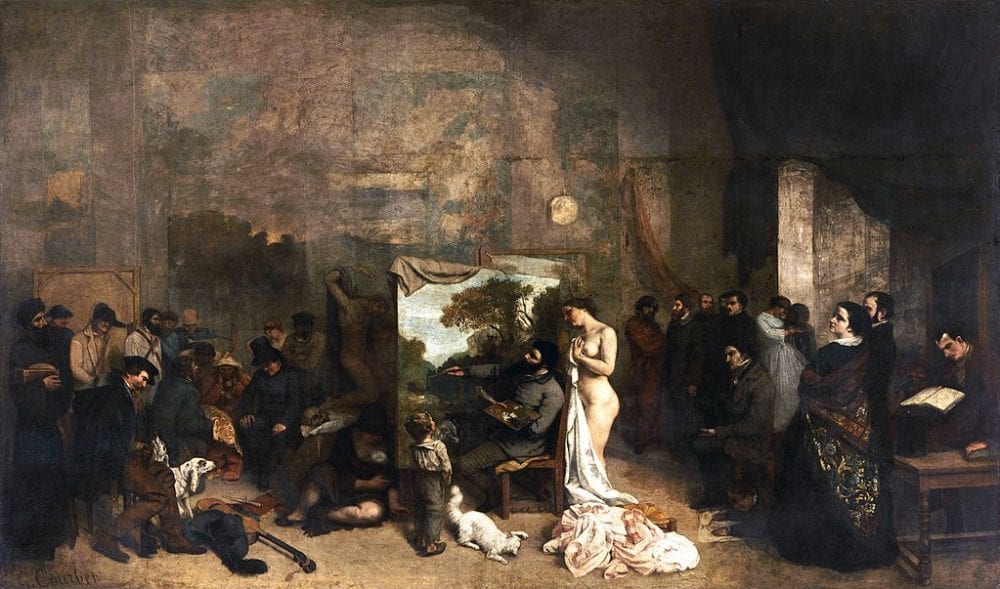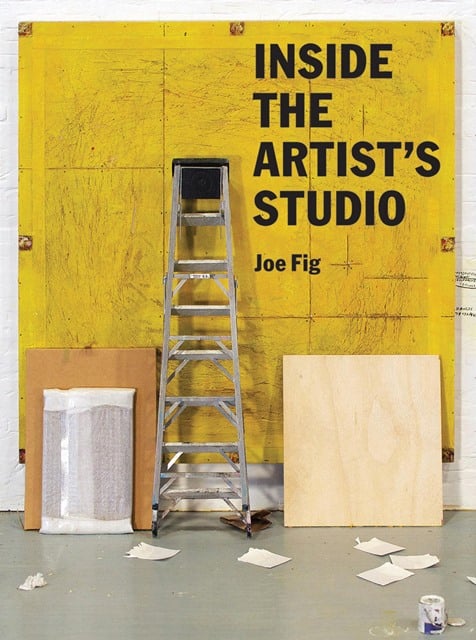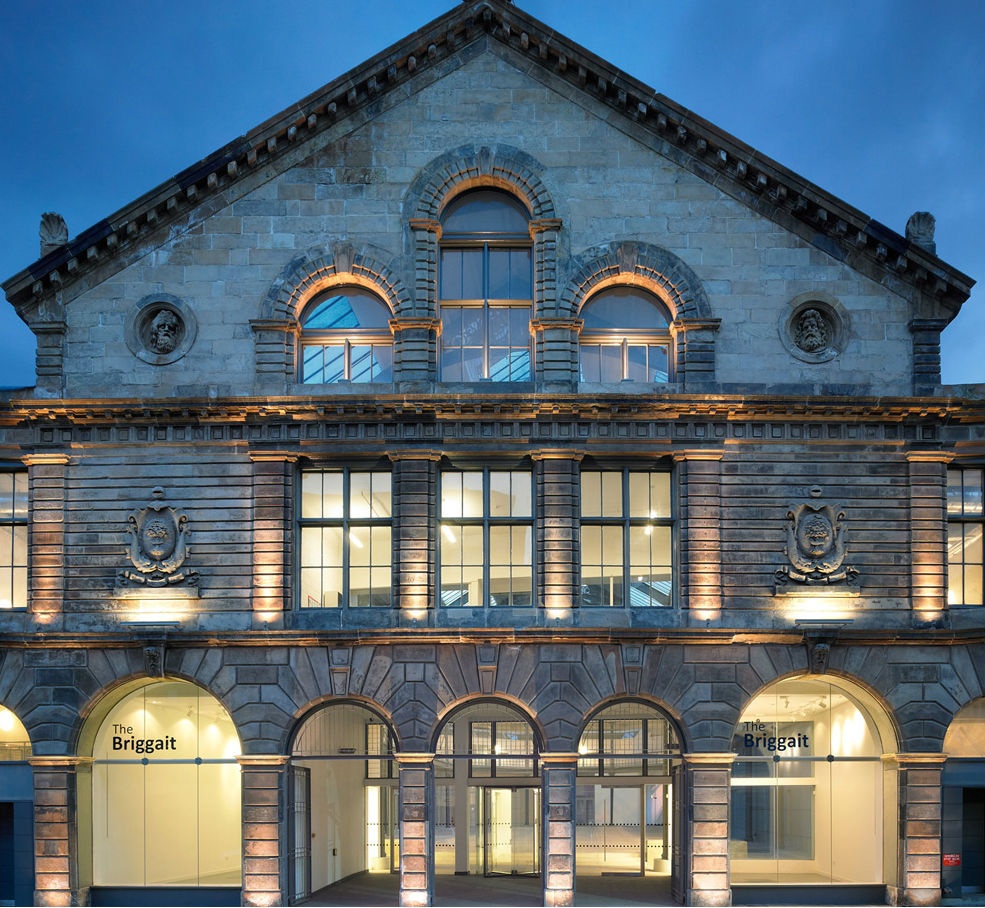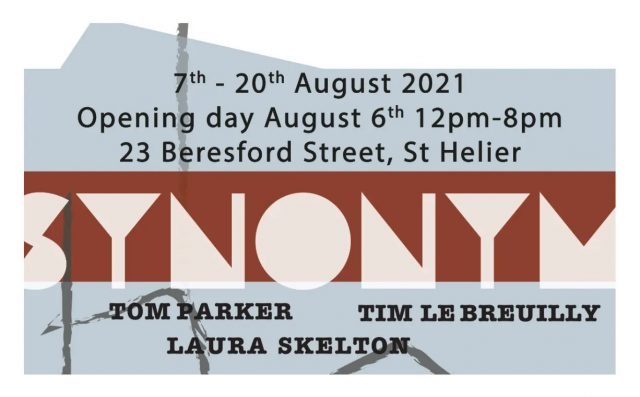For many, the artist’s studio seems an almost mythical place, with paint scattered over the floors, canvases stacked on every surface and life models lounging on tattered settees. The studio is an extension of the artist’s personality – a haven where creativity can run wild, and societal rules and expectations are temporarily erased.
Artists’ studios are often intensely private, so their true nature often remains elusive to outsiders. Some artists have painted their studios, allowing us glimpses into their inner sanctums. There is a wonderful complexity in viewing an artist’s rendering of their own studio in their signature style; it’s an ideal insight into the conditions they need for productive output.
Rembrandt’s rendition shows a sparse, slightly crumbling studio devoid of clutter, with minimal art supplies and no natural light source, instead of focusing on the artist in front of his enormous easel. The emphasis is put squarely on the room and the artist, with the painting, turned away from the viewer. This is a painting about a space, not a painting about a painting.

Rembrandt van Rijn
© Museum of Fine Arts / Wikipedia Commons
In sharp contrast, Courbet’s studio painting documents an enormous, vaulted space, with the artist at the centre, surrounded by human and canine onlookers of all ages. It’s a representation of a studio as a highly social space, where this particular artist does not require serenity or privacy to be inspired.

Gustave Courbet
© Musée d’Orsay / Wikipedia Commons
Matisse’s painting of his studio is filled with objects for used for inspiration: vases, pots, plants and sculptures. There are finished and unfished canvases balanced on surfaces, and there’s an overwhelming sensation of colour and light. His use of flat red colour for the furniture elevates and establishes the importance of the objects and the paintings in the studio.

Henri Matisse
Courtesy of www.HenriMatisse.org
More recently, Joe Fig photographed the studios of over 120 artists and compiled them in his book, Inside the Artist’s Studio. They provide intimate snapshots into the included artists’ spaces, processes and ultimately, lives.

While these works provide visual escapism into the spaces and lives of artists, they don’t depict the often-difficult process of finding a space to make art in. For many artists, whether practicing full-time or part-time, the expense of studio rent on top of living costs is prohibitive. For others who do have the funds, there can be extremely long waiting lists or nothing suitable in geographically remote locations.
WASPS – Workshop & Artists Studio Provision Scotland
WASPS (Workshop & Artists Studio Provision Scotland) is a charity that addresses this issue in Scotland. Born out of a desire to facilitate quality, affordable spaces for artist to work in, it has grown to include 20 buildings, 900 artists and 33 arts organisations.
WASPS finds disused or derelict buildings in areas needing regeneration. Their finished centres provide jobs for the local community, affordable studio space for practising artists, and areas that can evolve into community creative hubs. For regions where the councils do not have funding to lead creative initiatives, this can be truly transformative. Some of the studios are in far-flung locations like Orkney, Shetland and Skye, where any studio space is hard to come by.

As an artist in a WASPS studio, you have the opportunity to create a profile on their website, detailing your career and exhibition history. You can participate in open studios, residencies and exhibitions, both live and online (during the pandemic). They also have an online shop, where any residing artist can sell their works centrally.
The WASPS model could be adapted and rolled out in Jersey or elsewhere, provided funding was available, and there was support from the government and developers in acquiring sites not fit for other purposes. The finished sites are self-sustaining from the rental income they bring in and provide an artistic haven for artists and members of the community.
WASPS Inverness Creative Academy has completed Phase One, providing 31 studio spaces for artists. Phase Two is now underway, which will provide additional workspaces, gallery and event spaces. They are still fundraising for the completion of this phase, and donations can be made here. More information about WASPS, their artists and exhibitions can be found here.




